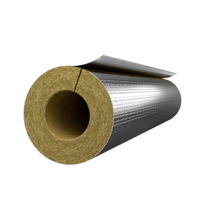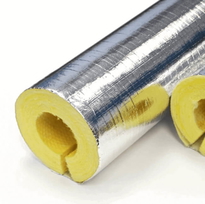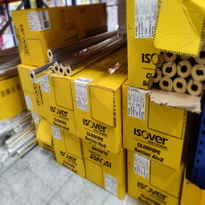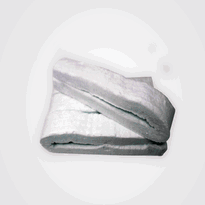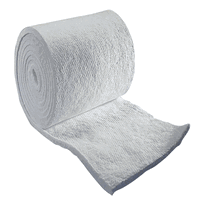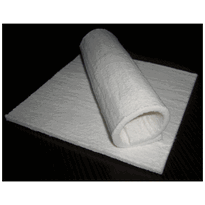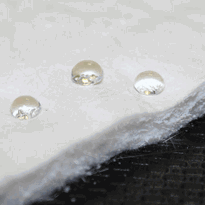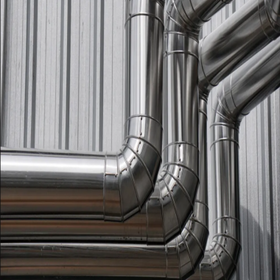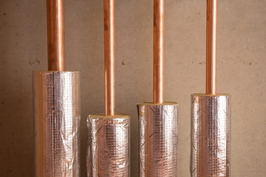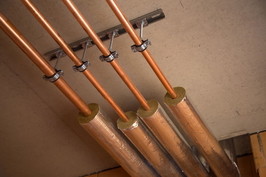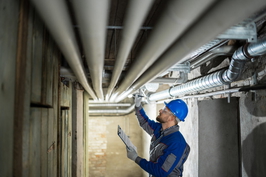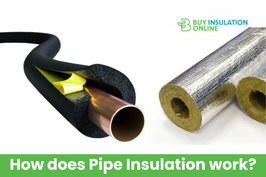Similar Categories
The Essential Guide to Steam Pipe Insulation in the UK
When it comes to managing steam systems within the industrial and commercial sectors of the UK, steam pipe insulation emerges as a pivotal element. Its role extends beyond mere functionality; it encapsulates a broad spectrum of advantages that are essential for the optimal performance and safety of steam distribution networks.
The Significance of Steam Pipe Insulation
The primary purpose of steam pipe insulation is to preserve the thermal energy of the steam as it travels through the piping system. This conservation of energy is not only crucial for maintaining the efficiency of the system but also plays a significant role in reducing operational costs. By minimizing heat loss, insulation ensures that steam reaches its destination at the desired temperature, thereby enhancing the overall system’s effectiveness.
Moreover, insulation serves as a protective barrier, safeguarding personnel from potential burn hazards associated with high-temperature steam pipes. It also contributes to creating a safer work environment by reducing surface temperatures and mitigating the risk of accidents.
Why Insulate Steam Pipes?
 Insulating steam pipes is a fundamental aspect of managing a steam system, particularly within the UK’s diverse climate. The rationale for insulating these pipes is multifaceted, impacting everything from operational efficiency to workplace safety.
Insulating steam pipes is a fundamental aspect of managing a steam system, particularly within the UK’s diverse climate. The rationale for insulating these pipes is multifaceted, impacting everything from operational efficiency to workplace safety.
Maintaining Temperature for Efficiency
The most immediate benefit of insulation is its ability to maintain the steam’s temperature as it moves through the pipes. This is crucial for the efficiency of the steam system, as heat loss can lead to increased fuel consumption and, consequently, higher energy bills. By keeping the steam at a consistent temperature, insulation ensures that the system operates at peak efficiency, delivering steam effectively from the boiler to its point of use.
Safety and Comfort in the Workplace
Beyond efficiency, the safety of workers is paramount. Uninsulated steam pipes can reach dangerously high temperatures, posing a burn risk to anyone who comes into contact with them. Insulation acts as a protective layer, significantly reducing the surface temperature of the pipes and minimizing the risk of burn injuries.
Moreover, by reducing the ambient heat emitted by the pipes, insulation contributes to a more comfortable work environment. This is particularly important in enclosed spaces where excess heat can make working conditions unbearable.
Reducing Heat Loss and Environmental Impact
Insulation also plays a role in reducing the environmental impact of steam systems. By minimising heat loss, less energy is required to produce steam, thereby reducing the carbon footprint of the operation. This aligns with the UK’s environmental goals and regulations, making insulation not just a practical choice, but an environmentally responsible one as well.
Insulating steam pipes is an essential practice that serves to enhance the efficiency of steam systems, protect workers, and contribute to a more sustainable environment. It’s a straightforward measure that yields significant benefits for any facility relying on steam power within the UK.
Types of Steam Pipe Insulation
In the UK, selecting the right type of insulation for steam pipes is crucial for ensuring system efficiency and safety. Let’s delve into the most common types of insulation materials used and their unique properties.
![Isover Climpipe Fibreglass Pipe Insulation]() Mineral Wool Insulation
Mineral Wool Insulation
Mineral wool insulation is renowned for its excellent thermal resistance and fire-retardant capabilities, making it an ideal choice for high-temperature steam applications. It is composed of natural minerals and offers superior sound dampening, which is beneficial in noisy industrial environments.
Fibreglass Insulation
Fibreglass insulation is another prevalent option, made from fine strands of glass woven into a fabric and bonded with resin. It strikes a balance between thermal efficiency and cost, suitable for a variety of temperature ranges. Its versatility allows it to be used in different forms, such as rigid boards or flexible blankets.
Foam Insulation
Foam insulation is lightweight and easy to install, often chosen for its moisture resistance and acoustic properties. It is particularly effective in preventing condensation, which can lead to corrosion under insulation—a common issue in steam systems.
Each type of insulation material offers distinct advantages and is designed to meet the specific requirements of steam pipe systems. Whether it’s mineral wool’s fire resistance, fibreglass’s versatility, or foam’s moisture resistance, the UK market provides a range of options to cater to the diverse needs of steam systems.
Choosing the Right Insulation for Your Steam Pipes
When it comes to steam pipe insulation, making the right choice is crucial for the longevity and efficiency of your system. In the UK, where temperatures can vary drastically, the proper insulation can make all the difference. Here’s how to ensure you’re making the best decision for your steam pipes.
Understanding Temperature Range
The temperature range is the first factor to consider. Your insulation must be able to withstand the maximum temperatures your steam pipes will encounter. For high-temperature steam applications, materials like mineral wool and fibreglass are often recommended due to their ability to handle extreme heat without degrading.
Assessing Thermal Conductivity
Thermal conductivity is a measure of a material’s ability to conduct heat. In the context of insulation, you want a material with low thermal conductivity, ensuring that heat stays within the steam pipe and isn’t lost to the surrounding environment. This is where the U-value comes into play, indicating the insulation’s effectiveness, the lesser the U-value, the better the insulation’s performance.
Considering Moisture Resistance
Moisture resistance is another critical factor, especially in the UK’s damp climate. Insulation that can resist moisture will prevent corrosion under insulation (CUI), a common problem that can lead to system failure. Materials like foam insulation are often chosen for their excellent moisture resistance properties.
Making an Informed Decision
By considering these factors—temperature range, thermal conductivity, and moisture resistance—you can select insulation that not only protects your steam pipes but also contributes to the system’s overall efficiency and safety. It’s about finding the balance that suits your specific needs and environmental conditions.
Selecting the right insulation for your steam pipes is a nuanced process that requires a thorough understanding of your system’s requirements and the operating environment. With the right insulation, you can achieve optimal performance, energy efficiency, and longevity for your steam system in the UK.
Installation and Maintenance of Steam Pipe Insulation
 Proper installation and diligent maintenance are the cornerstones of effective steam pipe insulation. Let’s delve into the best practices for installing insulation and maintaining it to ensure your steam system operates at peak performance.
Proper installation and diligent maintenance are the cornerstones of effective steam pipe insulation. Let’s delve into the best practices for installing insulation and maintaining it to ensure your steam system operates at peak performance.
Best Practices for Installation
The installation of steam pipe insulation requires careful attention to detail to ensure maximum effectiveness. Here are some key tips:
-
Measure Accurately: Before purchasing insulation, measure the outer diameter of your steam pipes to ensure a snug fit.
-
Select Appropriate Insulation: Choose an insulation material that can withstand the temperatures and environmental conditions of your system.
-
Secure Insulation Properly: Use appropriate fastening methods, such as bands, wires, or adhesives, to ensure the insulation remains in place.
-
Seal Seams and Joints: Prevent heat loss and moisture ingress by sealing all seams and joints in the insulation material.
Importance of Regular Maintenance
Regular maintenance is essential to prolong the life of your steam pipe insulation and to maintain system efficiency:
-
Inspect Regularly: Schedule regular inspections to check for damage, wear, or moisture, which can compromise insulation effectiveness.
-
Repair Promptly: Address any issues immediately to prevent further damage and to maintain the integrity of the insulation.
-
Clean as Needed: Keep the insulation clean from dust and debris, which can affect its thermal properties and potentially become a fire hazard.
By following these installation and maintenance guidelines, you can ensure that your steam pipe insulation will provide optimal thermal efficiency, safety, and longevity. Remember, the effectiveness of your insulation is only as good as its installation and upkeep.
Featured Products from Buy Insulation Online
When it comes to insulating steam pipes, the quality of the insulation material is paramount. At Buy Insulation Online, we offer a selection of top-tier insulation products designed to meet the diverse needs of our customers in the UK. Let’s take a closer look at some of the featured products.
Isover Climpipe Fibreglass Pipe Insulation
Isover Climpipe Fibreglass Pipe Insulation is a premium choice for those seeking both thermal and acoustic insulation properties. This mineral wool pipe insulation is lightweight, easy to install, and comes with a reinforced aluminium foil covering that acts as an effective vapour barrier. It’s designed for a quick ‘snap on’ installation, making it a time-saver on the job site. The aluminium face of Isover ClimPipe grants it a Class O rating, indicating its resistance to the spread of flames, which is a critical safety feature.
Rockwool Pipe Insulation
Rockwool’s aluminium-faced stone wool insulation is another excellent product for insulating steam pipes. Known for its durability and anti-fungal properties, this insulation is designed to maintain optimal thermal performance even at temperatures as high as 250°C. The integral self-adhesive lap ensures a secure and swift installation process. Rockwool insulation is also environmentally friendly, being made from sustainably sourced materials and is almost 97% recyclable.
Paroc Pipe Insulation
Paroc Pipe Insulation offers a robust solution for heating and hot water pipe insulation. Made from high-quality mineral wool, this insulation is supplied in convenient 1.2m lengths, which helps to minimise thermal bridging and maintain the temperature of hot water within the pipes. Paroc insulation is also fire-resistant, with a Euroclass A2 rating, and the factory-applied aluminium foil facing provides an additional layer of protection against moisture.
These featured products from our website Buy Insulation Online represent some of the best options available for steam pipe insulation. Each product is designed with specific features to enhance the efficiency, safety, and longevity of steam systems. By choosing the right insulation, you can ensure a high-performing steam system that aligns with the UK’s stringent safety standards.
Conclusion
In summary, steam pipe insulation is a critical component in the efficiency, safety, and sustainability of industrial and commercial steam systems in the UK. Its role in preserving thermal energy, reducing heat loss, and safeguarding personnel underscore its significance.
Choosing the right insulation based on factors like temperature range, thermal conductivity, and moisture resistance, along with proper installation and regular maintenance, ensures optimal performance. Featured products from suppliers like Isover, Rockwool, and Paroc exemplify the quality options available, contributing to energy efficiency, workplace safety, and environmental sustainability. As the UK emphasizes these aspects, steam pipe insulation remains pivotal for facilities relying on steam power, playing a foundational role in the success of industrial and commercial operations.

